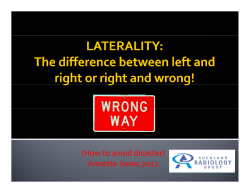
Preliminary Pages
DECLARATIONS I, Nomvuyo Dadirai Tembo, declare that this Dissertation represents my own work and that all the sources I have quoted have been indicated and acknowledged by means of complete references. I further declare that this Dissertation has not previously been submitted for a Degree, Diploma or other qualification at this or any other University. It has been prepared in accordance with the guidelines for the Master of Public Health – Population Health Studies Dissertation of the University of Zambia. Signed……………………………………………. Date………………………… Candidate Signed……………………………………………… Principal Supervisor i Date………………………… CERTIFICATE OF APPROVAL The University of Zambia approves this Dissertation on Knowledge, Perceptions and Practices of Cervical Cancer Screening among Women Aged between 15 and 49 in Selected Clinics of Lusaka District in partial fulfilment of the requirements for the award of Degree of Master of Public Health – Population Health Studies. Examiner’s Signature……………………………………. Date………………………… Examiner’s Signature……………………………………. Date………………………… Examiner’s Signature……………………………………. Date………………………… Head of Department, Public Health, School of Medicine, University of Zambia, P.O Box 50110, Lusaka, Zambia Signature……………………………………………. ii Date…………………………….. ABSTRACT Cervical Cancer (CC) is a major public health problem, not only in Zambia but the world over. Millions of new cases are being reported, especially in the sub-Saharan Africa, where Zambia is located. This has resulted in a number of interventions being put in place to halt the spread of the Human Papilloma Virus (HPV) infection, which eventually causes CC, like sensitization and advocacy around the screening of cervical cancer or carrying out a Pap smear. The overall aim of this study was to determine the Knowledge, Perceptions and Practices of Cervical Cancer Screening (CCS) among women aged between 15 and 49 years in Lusaka District. The emphasis was on coverage/utilization of the CCS centers, association between perceptions and women’s decisions on the uptake of CCS, practices influencing women in shunning CCS and also the factors that would motivate women to undertake CCS in order that the coverage/utilization in the centers is eventually improved. This was a cross-sectional study which also used a mixed method (quantitative and qualitative) in collecting data. Respondents were drawn from three highly populated areas within Lusaka District (i.e. Ng’ombe & Kalingalinga clinics) and the University Teaching Hospital (UTH) which were purposively selected because of being CCS centers. Every 10th woman aged between 15 and 49 coming to the health facility for any service was systematically selected and recruited if they consented, then interviewed using the structured interview guide and two Focused Group Discussions (FGDs) were conducted (i.e. 16 women who also consented). The study recruited a total of 474 women. The data was then analyzed using two software packages; STATA version 11.0, which was used to analyze the quantitative data (questionnaires), while NVIVO version 9.0 was used to analyze the qualitative data (FGDs and verbatim recordings). The confidence interval was set at 95%, and a result yielding a P-value of 5% or less was considered to be statistically significant. Bivariate, Multivariate Logistic Regression analysis and Chi-square tests were done in order to ascertain any association or relationships between the dependent and independent variables. The Matrices were also used to come up with an analysis for the FGDs using participants’ own words and a summary was written in narrative form. The study findings revealed that there is a 50.6 per cent prevalence of knowledge about CCS although about a quarter of the women (i.e.22.6 per cent) had been screened. The research further revealed that a 98.3 per cent of the women expressed willingness to undergo CCS. In conclusion, the results showed that although CCS is still very low in Lusaka District, screening is perceived positively. It is also important to note that merely having centers of screening would not mean that women would undertake the screening because to them it may not be an immediate need. It is therefore imperative that more sensitization is carried out to help change the mindset and CCS to be put as policy to be carried out at least once annually. iii DEDICATIONS It is with utmost pleasure and sincere gratitude that I dedicate this study to my lovely and very dear parents Mr Elijah Marko and Mrs Esnath Tembo for their selfless trust and undying support and encouragement that made this work a possibility. To my fiancé Mr. Emmanuel Kamyalile Sinkala, who has made sacrifices for me and stayed by my side always and believed in me. To my brothers and sisters, who have always given their moral and financial support. Special mention must be made of Mr. Edwin Tembo who was selfless and participated in the actual data collection, Mr. Elijah Marko Tembo Jr who always provided financial and moral support and Aunty Iness Kayombo who were able to always give me a listening ear when I needed to reduce my stress levels. Above all, I thank God almighty most importantly, for having enjoyed good health that he accorded me to carry out this research and allowing me to overcome all hurdles. I shall forever be indebted to him for this. iv ACKNOWLEDGEMENTS This project would not have been possible without the support of many people too numerous to mention. My utmost gratitude goes to my principal supervisor Dr Rosemary N. Likwa, who read my numerous revisions and helped me make some sense of any confusion. Also many thanks to my co- supervisor Dr Mulindi H. Mwanahamuntu, who offered guidance and support . I am also grateful to the entire staff and management of the University of Zambia, in particular, the School of Medicine, for facilitating my learning. I wish to express my utmost gratitude to my family as my sponsors for enabling me to undertake a Master of Public Health – Population Studies course at the University of Zambia. I am indebted to Professor Seter Siziya who helped me with data analysis. And finally, I am grateful and also indebted to my family and fiancé for their support and encouragement during the whole period of my studies. v TABLE OF CONTENTS DECLARATIONS ......................................................................................................................... i CERTIFICATE OF APPROVAL ............................................................................................... ii ABSTRACT .................................................................................................................................. iii DEDICATIONS ........................................................................................................................... iv ACKNOWLEDGEMENTS ......................................................................................................... v TABLE OF CONTENTS ............................................................................................................ vi APPENDICES ............................................................................................................................ viii LIST OF FIGURES ................................................................................................................... .. x LIST OF TABLES ....................................................................................................................... xi LIST OF ACRONYMS/ABBREVIATIONS............................................................................ xii CHAPTER ONE: INTRODUCTION..…………………………………………………1 1.1 Global Perspective of Cervical Cancer ..................................................................................... 1 1.2 Regional Perspective of Cervical Cancer ................................................................................. 1 1.3 National Perspective of Cervical Cancer ................................................................................ 2 1.4 Screening of Cervical Cancer in Africa ................................................................................... 3 1.5 Screening of Cervical Cancer in Zambia .................................................................................. 4 1.6 Statement of the Problem .......................................................................................................... 5 1.6.1 Service Related Factors ..................................................................................................... 7 1.6.1.1 Staffing Levels……..………….…………………………………………………………..7 1.6.1.2 Lack of trained Health Personnel…..……………………………………………………..8 1.6.1.3 Non-availability of screening services/facilities…………………………………………..8 1.6.2 Screening of Cervical Cancer Related Factors ................................................................ 8 1.6.2.1 Education Status…….……………………………………………………………………..8 1.6.3 Behavioural Factors ............................................................................................................. 8 1.6.3.1 Negative attitude towards Cervical Cancer Screening….……………………....................8 1.6.3.2 Medical checkups…..…………………….………………………………………………..9 1.6.4 Socioeconomic and Cultural Factors ................................................................................. 9 1.6.4.1 Socioeconomic status…….………………………………………………………………..9 1.6.4.2 Multi-parity……………...………………………………………………………………...9 1.6.4.3 Use of Traditional Medicines.……………………………………………………………..9 1.7 Study Justification…………………………………………………..…….………………….10 1.8 Operational Definition of Terms……………………………………………………………..12 vi CHAPTER TWO: LITERATURE REWIEW…………………….............................13 2.1 Coverage/Usage of Cervical Cancer Screening Centres ........................................................ 13 2.2 Knowledge of Cervical Cancer Screening ............................................................................. 14 2.3 Women’s Decisions ................................................................................................................ 15 2.4 Perceptions of Cervical Cancer Screening .............................................................................. 16 2.5 Practices of Cervical Cancer Screening .................................................................................. 16 2.6 Conclusion .............................................................................................................................. 18 2.7 Research Questions, General and Specific Objectives ........................................................... 19 2.7.1 Research Questions .............................................................................................................. 19 2.7.2 Research Objectives ............................................................................................................. 19 2.7.2.1 General Objectives……………………………………………………………………….19 2.7.2.2 Specific Objectives ........................................................................................................... 19 CHAPTER THREE: RESEARCH METHODOLOGY…...………………...…….20 3.1 Variables, and their Scales of Measurement……………………………...………...………..20 3.1.2 Variables……………………………………………………………….…………………..22 3.1.2.1 Dependent Variables…..………………………………………..……...………………..22 3.1.2.2 Independent Variables………………………………………………….………………..22 3.2 Study Design .......................................................................................................................... 23 3.3 Study Setting ........................................................................................................................... 23 3.4 Study Population ..................................................................................................................... 24 3.5 Sample Selection .................................................................................................................... 24 3.5.1 Inclusion Criteria ...................................................................................................... 25 3.5.2 Exclusion Criteria..................................................................................................... 25 3.6 Sample Size............................................................................................................................. 25 3.7 Sample Selection Methods ...................................................................................................... 26 3.7.1 Data Collection Techniques and Tools ..................................................................... 26 3.7.2 Focused Group Discussion (Qualitative Method).................................................... 27 3.7.3 Structured Interview Schedule (Quantitative Method) ............................................ 27 3.7.4 Validity ...................................................................................................................... 28 3.7.5 Reliability................................................................................................................... 28 3.8 Plan Data Collection .............................................................................................................. 28 3.9 Pilot Study .............................................................................................................................. 29 3.10 Ethical Consideration ............................................................................................................ 29 vii CHAPTER FOUR: DATA ANALYSIS AND PRESENTATION OF FINDINGS….…30 4.1 Data Processing and Analysis .............................................................................................. .30 4.1.1 Quantitative Data Analysis .............................................................................. .30 4.2 Data Presentation ................................................................................................................... .30 4.2.1 Quantitative Data Analysis ................................................................................................. .30 4.2.1.1 Section A: Socio-Demographic Characteristics of Respondents………………...............31 4.2.1.2 Section B: Knowledge about Cervical Cancer …...……………………………………...35 4.2.1.3 Section C: Socio-Cultural Beliefs: Perception of Cervical Cancer Screening..................39 4.2.1.4 Section D: Cultural Practice of Cervical Cancer Screening…..………………................41 4.2.1.5 Section E: Socio-Demographic Characteristics by Knowledge of Cervical Cancer ........45 4.2.2 Qualitative Data……………………………………………………………………...........50 4.2.3 Focus Group Discusion ...................................................................................................... .50 4.3 Demographic Characteristics of the participants………….………..………………..……....51 4.3.1 Matrix 1: Knowledge about Cervical Cancer……………….………..…………………....52 4.3.2 Matrix 2: Perceptions about Cervical Cancer Screening………………………………….54 4.3.3 Matrix 3: Practices of Cervical Cancer Screening……………………...………......……..57 CHAPTER FIVE: DISCUSSION OF FINDINGS..………………………………...59 5.1 Summary of Findings ............................................................................................................. 59 5.2 Discussion of Findings ........................................................................................................... 60 5.2.1 Demographic Characteristics of Cervical Cancer Screening ............................................. 60 5.2.2 Knowledge on Cervical Cancer Screening ........................................................................ 61 5.2.3 Women's Decisions on the Uptake of Cervical Cancer Screening ..................................... 63 5.3 Limitations of the Study.......................................................................................................... 65 5.4 Conclusion and Recommendations ......................................................................................... 65 BIBLIOGRAPHY/REFERENCES……………………………………………..67 APPENDICES…………………...………………………………………………70 Appendix I Information Sheet & Consent Form ........................................................................ 70 Appendix II Translation Of Information Sheet & Consent Form ............................................... 72 Appendix III Assent Form ........................................................................................................... 74 Appendix IV Interview/Questionnaire Guide ............................................................................... 75 Appendix V Focused Group Discussion Guide ............................................................................ 82 Appendix VI Gantt Chart .............................................................................................................. 84 viii Appendix VII Budget .................................................................................................................... 85 Appendix VIII Budget Justification .............................................................................................. 87 Appendix IX Map Of Cervcal Canceer Incidence By Country .................................................... 88 Appendix X Zambia National Cancer Registry Annual Aggregates from 1999 to 2004……….89 Appendix XI Map Of Zambia Showing Relative Location of Lusaka District .......................... 90 ix LIST OF FIGURES ITEM PAGE # Figure 1.6.1: Problem Analysis Framework……………...………………………………………7 Figure 3.3.1: Map of Zambia Showing Relative Location of Lusaka District…...……………..24 Figure 4.2.1.2.1: Bar – Chart showing percentage of respondents who had heard about CC….35 Figure 4.2.1.2.2: Pie-Chart showing percentage of respondents with knowledge about CC ….36 Figure 4.2.1.4.1: Pie-Chart showing percentage of respondents screened for CC…….…….…41 x LIST OF TABLES ITEM PAGE # Table 1.8.1: Operational Definition of Terms………………...…………………………..…12 Table 3.1.1: Variables and Measurement ………………………………………………...…20 Table 4.2.1.1.1: Socio-Demographic Data…………………………………………….……..31 Table 4.2.1.1.2: Parity of the Respondents……………………………………….……….…34 Table 4.2.1.2.1: Sources of information about CC……………………..……………….…...36 Table 4.2.1.2.2: Responses to Causes of CC……………………………….…………….….37 Table 4.2.1.2.3: Signs & Symptoms of CC………………………………………….………37 Table 4.2.1.3.1: Fear of undergoing CCS……………….……………...………………...….39 Table 4.2.1.3.2:Reasons for being afraid of undergoing CCS………………………...……..39 Table 4.2.1.3.3:Socialization of respondents on CCS information…………………..………40 Table 4.2.1.3.4:Reasons for socialization with friends/family on CCS information……..….40 Table 4.2.1.3.5:Reasons for CCS of all women…………..…………………………………40 Table 4.2.1.4.1:Duration of CCS………..…………………………………………………...41 Table 4.2.1.4.2:Response to voluntarily screening for CC…………………..……...………42 Table 4.2.1.4.3:Willingness to advise friends/relatives to go for CCS………..……………..42 Table 4.2.1.4.4:Ever used Traditional Medicines………………………..…………………..43 Table 4.2.1.4.5:Reasons for preference of herbs…….………………………………………43 Table 4.2.1.4.6:Duration of usage of herbs…………..………………………………………44 Table 4.2.1.4.7:Willingness to reveal HPV status to partner/family………..……………….44 Table 4.2.1.5.1:Socio Demographic Characteristics by Knowledge of CC………..……...…45 Table 4.2.1.4.3:Multivariate Logistic Regression..…………………………………………..48 Table 4.2.3.1:Composition of participants of the Focused Group Discussions……………..50 Matrix 1 : Knowledge about Cervical Cancer (CC)……………………………………….52 Matrix 2 : Perception about Cervical Cancer Screening (CCS)…………………………...54 Matrix 3 : Practices of Cervical Cancer Screening (CCS)………………………………...57 xi LIST OF ACRONYMS & ABBREVIATIONS ACS: American Cancer Society CC: Cervical Cancer CCS: Cervical Cancer Screening CIDRZ: Center for Infectious Disease Research in Zambia CR : Cancer Registry CSO: Central Statistical Office FGD: Focused Group Discussion GLOBOCAN: Global Burden of Cancer HIV/AIDS: Human Immuno Virus / Acquired Immuno Deficiency Syndrome HPV: Human Papilloma Virus IARC: International Agency for Research on Cancer ICC: Invasive Cervical Cancer IUHPE : International Union for Health Promotion and Education MoH: Ministry of Health USA: United States of America UTH: University Teaching Hospital WHO: World Health Organization ZNCR: Zambia National Cancer Registry xii
© Copyright 2025









